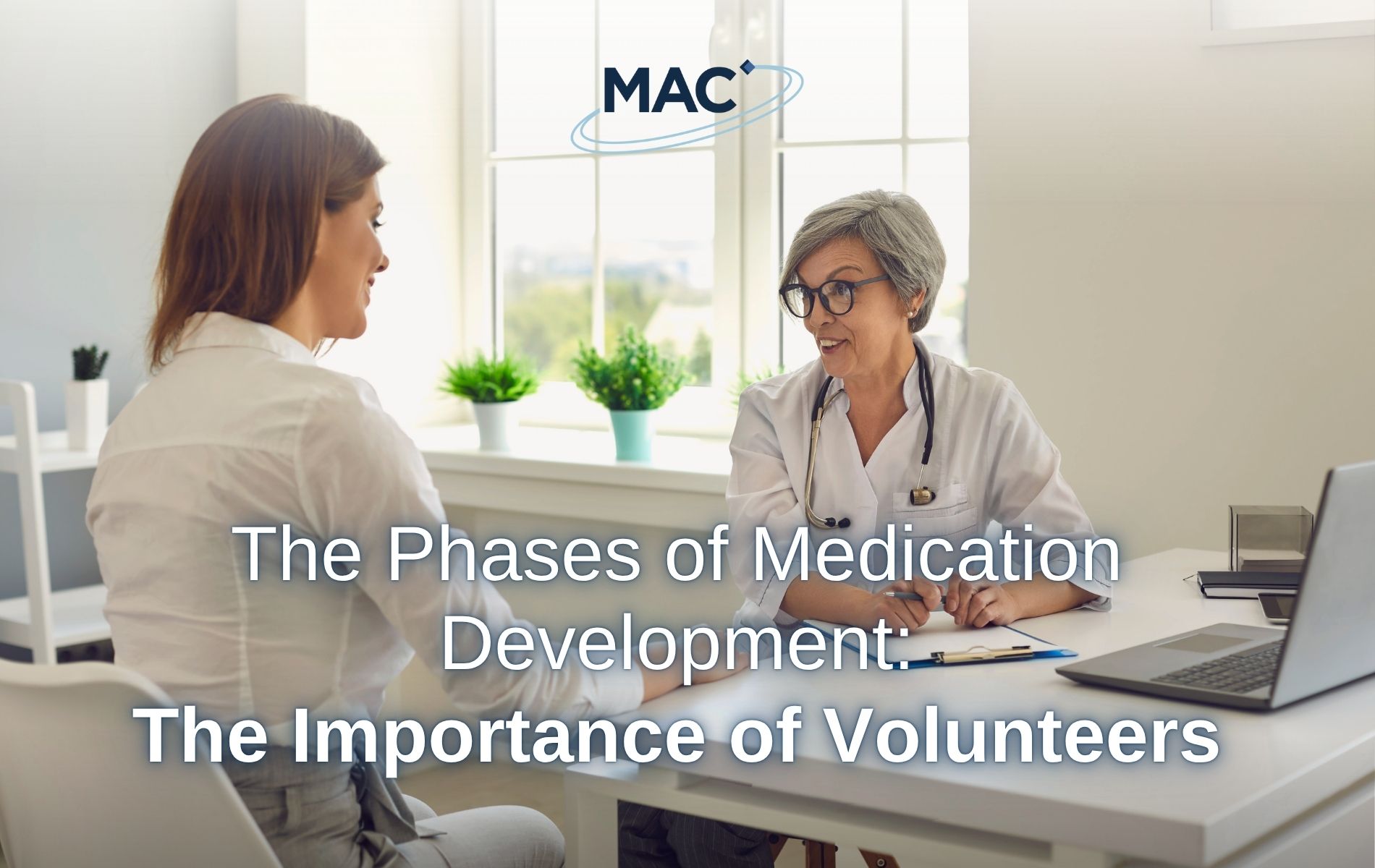When a new medication is developed, it must undergo a rigorous development and testing process before it becomes available to the public.
How is a new medication developed?
The development of a new medication can be broken down into five key phases:
Phase 1: Discovery and Development
Before the medication development process can begin, researchers must discover something ‘new’. This often comes from:
- New insights into a disease
- Testing of molecular compounds to find potential beneficial effects
- Unanticipated effects of existing treatments
- New technologies.
At this stage, researchers will test many different compounds for their potential as a medical treatment, narrowing down to a few promising candidates1. Researchers then conduct a series of experiments assessing performance and viability; they gather information about how the compound is absorbed, best administered, side effects, and more2.
Phase 2: Preclinical Research
Before testing in humans can occur, researchers must conduct preclinical research in vitro (i.e. in an assay or cell culture) or in vivo (i.e. in an animal). The main purpose of this phase is to determine whether a compound is safe for human use2. If not, the study will stop. These studies provide detailed information about dosing and toxicity levels1 and examine what the drug does to the body (pharmacodynamics) and what the body does to the drug (pharmacokinetics)2.
Preclinical research must comply with good laboratory practice (GLP) country regulations, in the UK this would be governed by the Medicines and Healthcare products Regulations Agency (MHRA), setting the standard for data quality, integrity, and reliability2.
Phase 3: Clinical Research
Clinical research investigates the efficacy and safety of treatments in humans, using patients, healthy volunteers, or both3. The main purpose of trials is to evaluate whether a new medicine or device is safe, that it is effective, whether it works better than existing options, and if it causes any adverse effects. One of the ways that this is assessed is by comparison to a placebo or ‘dummy’ treatment with no medical or therapeutic value that is indistinguishable from the investigative medication. Clinical trials also work out the optimal dosage for the medication.
Biomedical clinical trials have four phases:
- Phase I: This will involve testing a new medication or device for the first time in humans, usually a small group of participants with no medical conditions (known as healthy volunteers), primarily to assess the safety of the treatment, often at different dose levels. This is often followed by additional trials either within healthy volunteers or in participants with the condition the treatment is targeted to (first in patient studies) .
- Phase II: If a medicine or device is found to be safe in phase I, clinical trials a larger group of people (usually those living with the condition being focused on) are used to determine if the medication is effective in the treatment of the condition and further assess safety.
- Phase III: In this phase a larger population of patients with the condition, usually in different regions, and countries, are used to confirm the evidence gathered in earlier phases that the medicine or device is safe and effective in its intended indication, and whether the benefits of use are greater or equivalent to current standard of care treatments. This is often the step before a new medication is approved for general use.
- Phase IV: This takes place after country-level approval to examine the medication further in a wide population over a longer time period4.
Phase 4: Regulatory Agency Review
If there is sufficient evidence from preclinical and clinical research that a medication is safe and effective for its intended use, the developer can file an application to regulatory agencies like the UK’s MRHA to market the treatment1.
The MHRA review involves a team of experts – including doctors, statisticians, chemists, microbiologists, and pharmacologists. They analyse clinical research safety and efficacy findings such as potential adverse effects, patient outcomes, and a medication’s risk-benefit analysis2.
If the medication is deemed safe and effective as intended by the review panel, the MHRA, or other country regulatory agency, approves the medicine or device for manufacture, marketing, and distribution. In 2021, the MHRA approved 35 new medications, and 68% were previously approved in the EU5.
Phase 5: Post-Market Safety Monitoring
Once a medication is licensed, it is continuously monitored for safety and effectiveness in real-world use by regulatory agencies. Clinical research evaluates a medication’s safety and efficacy in a relatively small pool of volunteers, so it is important to continue monitoring this following its distribution to the general population after approval2.
Why participate in a clinical trial?
One of the most important aspects of the development process is the clinical research phase. Without clinical trials and volunteers, we would not have many of the medications we currently benefit from. This includes pain relief, chemotherapy, and antibiotics, Clinical research can, and does, save lives.
If you live with a mental or physical health condition, you may want to take part in a clinical trial to have potential access to the newest medications in development, particularly if previous or current treatments have been unsuccessful or without sufficient benefit. You may also want to be a part of advancing healthcare for people living with your condition, or in general. By taking part in clinical research, you can take an active role in your healthcare and contribute to improving healthcare for future generations! You may also receive payment for your participation.
Interested in taking part in a clinical trial?
MAC Clinical Research is dedicated to testing new and improved treatments for a broad range of medical conditions such as depression, social anxiety, knee osteoarthritis, and more.
If you decide to take part in a study with MAC, you will be closely monitored by our research doctors and nurses, and your GP will be fully informed of your participation. Many trials will also provide a patient payment, and all MAC studies endow reasonable travel expenses or transportation for site visits.
To find out more about our upcoming studies and to register your interest in taking part in a clinical trial, visit our current studies webpage.
References
1 FDA – The Drug Development Process
2 Pantheon – The 5 Drug Development Phases
3 NHS – Clinical trials
4 WHO – Clinical trials
5 Nature – Critics wary over plans to fast-track UK drug-approval model




